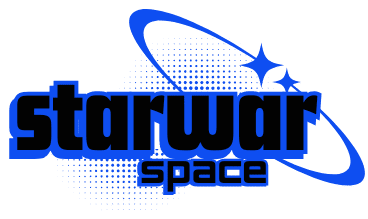Space exploration has captivated humanity’s imagination for centuries, driving scientific breakthroughs, technological innovation, and inspiring global wonder. In this comprehensive, SEO-optimized article, we’ll journey through past milestones, highlight modern missions, preview future endeavours, and layer in stunning multimedia to elevate reader engagement and dwell time.
1. A Glimpse into History
The iconic “Blue Marble” image from Apollo 17—captured in 1972—showed Earth in full, igniting environmental consciousness and the worldview known as the overview effect en.wikipedia.org+1nasa.gov+1. Early missions like Apollo not only tested human endurance in space but delivered culturally transformative moments framed through photography and storytelling.
Why it still matters:
-
Fosters unity and environmental stewardship (“Earth is one”)
-
Demonstrates humanity’s capabilities in overcoming technological challenges
-
2. Scientific Breakthroughs & Technological Spin‑Offs
Microgravity science in space:
Research aboard the International Space Station (ISS) offers insights into fluid dynamics, medical pathways, and life sciences under microgravity—advancements that ripple into Earth-bound healthcare and manufacturing.
-
Satellite and probe missions:
From Cassini’s stunning imagery of Saturn’s rings to the New Horizons flyby of Pluto, robotic missions extend our reach across the solar system skyhow.space.
Tech spin-offs:
Satellite communications, GPS navigation, advanced cameras, and even memory foam are byproducts of space-era innovation.
-
3. Modern Marvels: Telescopes & Deep‑Space Observatories
James Webb Space Telescope (JWST):
The COSMOS-Webb survey recently unveiled thousands of galaxies spanning cosmic time—from nearby star systems to structures formed mere hundreds of millions of years after the Big Bang timesofindia.indiatimes.com.
-
Hubble Achievements:
Milestones like the Hubble Legacy Field, mapping ≈ 265,000 galaxies, and — more famously — the Pillars of Creation in the Eagle Nebula showcase cosmic grandeur and provoke existential curiosity time.com+9en.wikipedia.org+9en.wikipedia.org+9.
European Space Agency (ESA) Proba‑3:
Accomplished a scientific first—creating an artificial solar eclipse to study the Sun’s corona in detail, benefiting solar physics and Earth-protection efforts
-
4. Upcoming and Ongoing Missions
-
Artemis Program: NASA aims to return humans to the Moon by 2027, establishing a sustainable presence and preparing for Mars missions.
-
Europa Clipper: Set to explore Jupiter’s moon Europa, seeking signs of habitability beneath its icy crust.
-
Private Missions: Companies like SpaceX and Blue Origin are revolutionizing access to space through reusable rockets and commercial crew flights.
5. Multimedia that Captivates
Integrating rich visuals and video content boosts engagement and SEO. Here are two recommended YouTube embeds:
-
- NASA’s Perseverance Rover Landing on Mars – live & narrated🌌
- Highlights from JWST’s Deep Universe Reveals – cosmic marvels unveiled
-
Embed multiple high-quality videos to increase dwell time and leverage YouTube’s ranking power.
Optimal placement:
-
Section 4: Embed current mission videos
-
Section 5: Historical mission retrospectives (e.g. Apollo, Cassini)
-
Section 6: Telescope discoveries (JWST, Hubble)
-
6. Vivid Imagery & Alt‑Text Strategy
Enhance visual appeal and SEO by adding:
-
Earth-from-space composites (e.g. Blue Marble, ISS shots)
-
Astronauts in spacewalks or lunar settings
-
Probe & telescope imagery (Saturn rings, Pluto plains, nebulae)
-
7. Engagement Tools & On‑Page Extras
Boost reader retention and interaction with:
-
Interactive quizzes: e.g., “Which Space Mission Should You Join?”
-
Infographics: Artemis timeline, JWST vs. Hubble feature comparison
-
CTAs:
-
Subscribe for updates on upcoming launches
-
Share your favorite mission in the comments
-
Explore related posts on Mars or asteroid mining
-
8. SEO & Keyword Best Practices
SEO Element Strategy Primary keyword “space exploration” (in title, H1, intro) LSI keywords “space missions,” “NASA,” “Artemis program,” “cosmic discovery” Heading structure Well-structured with H2–H4 tags for clarity & crawlability Content length ~800 words for depth and spending quality Multimedia use ≥2 YouTube videos, ≥4 images with descriptive alt tags Internal linking Link to related site sections: ISS, Mars rovers, telescopes 9. Gains: Why This Content Works
-
Search visibility: Rich multimedia + optimized headings = better ranking.
-
User engagement: Videos and visuals increase dwell time and reduce bounce.
-
Authority establishment: Covering past and present missions adds credibility.
-
Social sharing potential: Awe-inspiring content encourages shares and comments.
9. Gains: Why This Content Works
-
Search visibility: Rich multimedia + optimized headings = better ranking.
-
User engagement: Videos and visuals increase dwell time and reduce bounce.
-
Authority establishment: Covering past and present missions adds credibility.
-
Social sharing potential: Awe-inspiring content encourages shares and comments.
-
-
-
-
-

